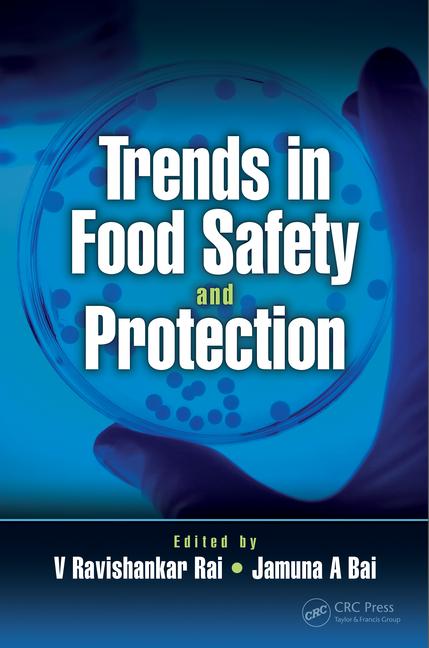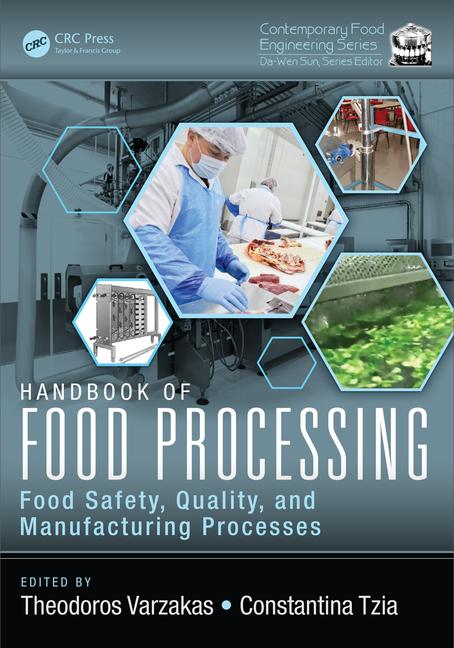Upcoming EPA Deadline to Disclose PFAS Use Means Likely Surge in Litigation for Food Industry
Reports to EPA by PFAS manufacturers and importers are likely to lead to a major increase in new consumer claims

Image credit: SimonSkafar/iStock/Getty Images Plus via Getty Images
The food industry should prepare for the possibility of a major increase in litigation based on allegations that products are contaminated with per- and polyfluoroalkyl substances (PFAS), so-called "forever chemicals." Publicity concerning PFAS in food packaging over the past several years has led to increased litigation alleging PFAS contamination in foods. Rather than claim any health impact, the mass tort plaintiffs' bar has filed proposed class action lawsuits alleging that manufacturers falsely marketed products by failing to disclose the presence of PFAS as an ingredient or contaminant. Such claims are likely to dramatically increase in the wake of the Environmental Protection Agency (EPA) requirement for manufacturers and importers of PFAS (and articles containing PFAS) to submit detailed reports on their use of PFAS by January 2026.
Potential PFAS Contamination in Food Products
There is at least a theoretical possibility that PFAS used in food processing and packaging can migrate into food, contaminating it. Accidental use of PFAS in food contact applications is one possible source of such contamination. The U.S. Food and Drug Administration (FDA) also issues permits for certain PFAS to be used in specific food contact applications, including nonstick coatings on cookware, sealing gaskets for food processing equipment, and food manufacturing aids. Perhaps the food industry's most ubiquitous FDA-approved use for PFAS is in anti-grease coatings for paper and paperboard food packaging. Manufacturers of grease-proofing agents for food packaging voluntarily agreed to stop selling agents containing PFAS in the U.S. in February 2024.1 That agreement, however, does not limit liability from PFAS contamination in foods, including liability from the past use of food wrappers treated with agents containing PFAS.
2026 EPA Reporting Requirement for PFAS
In October 2023, EPA imposed a reporting requirement for manufacturers and importers of substances and products containing PFAS.2 The regulation applies to virtually every company that knows or reasonably should know that it intentionally or inadvertently manufactured or imported PFAS or a PFAS-containing product between 2011 and 2022. Among the many details required by the reports on PFAS use, these companies must disclose potential consumer use and exposure information. These reports are available to the public by default, and none of the recognized confidentiality provisions are likely to apply to data concerning consumer use.3 The reporting deadline is currently set at January 11, 2026, with small businesses having an additional six months to report.4
PFAS Consumer Claims Against the Food Industry
Growing publicity about the potential health impacts of PFAS over the past several years has already led to a significant increase in proposed consumer class action lawsuits based on the alleged failure to disclosure the presence of PFAS in a product. The mass tort plaintiffs' bar frequently targets foods allegedly containing PFAS that are labeled as "healthy," "pure," "natural," etc. For example, The Coca-Cola Company is currently defending claims that it falsely marketed its Simply Tropical® juice drink as "made simply" with "all-natural ingredients," when plaintiffs allege that the drink is contaminated by multiple PFAS compounds from manufacturing equipment and/or product packaging.5 The upcoming PFAS disclosures to EPA are likely to lead to a major increase in new consumer PFAS claims.
The mass tort plaintiffs' bar prefers these types of PFAS consumer claims because they may reduce or avoid some of the hurdles that apply to personal injury claims. Personal injury claims require reliable science to prove that: (1) a specific PFAS compound could injure someone at the amount to which a consumer might be exposed, and (2) the plaintiff was actually injured by the PFAS in the defendant's product. Focusing on consumer expectation instead of actual health impact may sidestep some of the plaintiffs' burdens to support their claims with reliable scientific evidence. If the plaintiffs can convince the court to certify a claim as a class action, then a handful of plaintiffs who purchased a product can bring claims on behalf of a class of millions of customers.
How PFAS Reporting Requirements are Likely to Affect Litigation
Reports to EPA by PFAS manufacturers and importers are likely to lead to a major increase in new consumer claims. The disclosures in these reports are likely to far surpass previous public revelations about the presence of PFAS in consumer products, meaning that the scope of the resulting litigation is also likely to surpass what has come before. Indeed, past publicity about PFAS food packaging has consistently led to litigation. For instance, there were several proposed consumer class action lawsuits filed after a 2022 Consumer Reports article listed various companies' food packaging that purportedly tested positive for PFAS.6 McDonald's Corp. and Burger King Corp. were both sued based on allegations of PFAS contamination from anti-grease coatings in their food wrappers. The CAVA Group Inc., which operates fast casual Mediterranean restaurants, was similarly sued based on the alleged presence of PFAS in its grain and salad bowls.7
The mass tort plaintiffs' bar is near-certain to seize upon disclosures about PFAS use in food and food packaging to file new PFAS consumer litigation. The mass tort plaintiffs' bar has so far targeted restaurants and food manufacturers for PFAS consumer claims, not the companies that sell the food processing equipment or food packaging allegedly containing PFAS. If this pattern holds, then EPA reports filed by PFAS manufacturers and importers will result primarily in litigation against their customers in the food industry, instead of the manufacturers and importers themselves. Even a business's unknowing use of PFAS could lead to consumer lawsuits being filed based on theories of negligence or strict liability.
In addition to the mass tort plaintiffs' bar taking advantage of EPA reports on PFAS use to identify new potential defendants, there is the concerning possibility that courts will accept the reports to show that the product purchased by the plaintiffs contained PFAS. Plaintiffs have the evidentiary burden to establish that the products they purchased included PFAS as an ingredient or contaminant. In PFAS consumer claims litigated so far, most courts have required plaintiffs to allege that the product at issue tested positive for PFAS to get past the initial screening of their claim, although there is some disagreement on which tests are adequate.8 Testing requirements have helped screen out PFAS consumer lawsuits filed when plaintiffs have failed to fulfill their obligation to investigate the truth of their allegations before filing.9 The Simply Tropical® lawsuit, for instance, was dismissed on this basis before the court permitted plaintiffs to re-file their claims with new allegations about the presence of PFAS.
Courts have found, however, that alternative evidence can be sufficient to proceed with the litigation, even without testing. For example, without requiring plaintiffs to test the product, a federal court recently allowed a consumer class action to proceed against the manufacturer of Kerrygold butter for falsely marketing its product as "Pure Irish Butter" when it allegedly contained PFAS.10 The court found that there was enough evidence of PFAS contamination to proceed into fact discovery because the butter had been recalled in response to a New York State ban on PFAS in food packaging.10 If even a few courts were to accept PFAS reports to EPA as evidence of PFAS in a product in lieu of testing, it could open the floodgates to the mass tort plaintiffs' bar indiscriminately filing proposed PFAS consumer class action lawsuits without the need for any significant pre-filing investigation.
Addressing Potential Liability in the Food Industry
Given the history of PFAS consumer claims against the food industry, businesses should be especially proactive in addressing potential liability before companies' mandatory reports on PFAS use become public. Manufacturers and importers of PFAS who must report to EPA should already be aware of their potential litigation exposure and prepare to address it. Food businesses that purchased products potentially containing PFAS from those manufacturers or importers, however, may be unaware of their potential liability until the reports become public.
Before EPA's disclosure deadline, businesses in the food and beverage industry concerned about PFAS litigation for failure to disclose PFAS in a consumer product should begin formulating their responses. Some steps to consider include:
- Be conscious of potential litigation when preparing reports to EPA. Businesses that must submit reports on their manufacture or importation of PFAS should prepare those reports conscious of the prospect of litigation. Accuracy is essential. Just the appearance of hiding the facts can be damning in litigation. Reports should also include information necessary to contextualize the intentional or inadvertent PFAS use.
- Comply with other federal and state laws. The state and federal regulatory landscapes governing the use of PFAS are complicated, diverse, and ever-changing. Understanding a business's legal obligations and establishing the programs needed to comply with those obligations is essential. Even unintentional or technical violations of the law may provide a foothold for litigation or government actions.
- Update insurance coverage. Insurance to cover potential litigation liability will be harder to obtain once claims materialize, so companies should review and consider expanding insurance coverage to address the litigation risk.
- Identify alternative suppliers. Businesses concerned about PFAS litigation exposure from suppliers should review their supply chain to identify alternative products or new suppliers that have stronger policies against the use of PFAS.
- Review supplier contracts. Businesses can mitigate the risk of purchasing from suppliers by building in indemnification provisions, warranties, or representations concerning the possible presence of PFAS in the product purchased.
- Review marketing and public statements. In some circumstances, it may be advisable to have outside counsel conduct a pre-litigation review of a business's public statements and practices related to PFAS to determine if revisions can help avoid claims of false representations. If a business chooses to conduct an internal review, instead of a review by outside counsel, it should be aware of the possibility that its findings will later have to be turned over in litigation.
- Retain litigation counsel early. If a lawsuit based on the alleged presence of PFAS in a product is likely, businesses should retain appropriate outside counsel with a specialty in mass tort litigation to develop mitigation and response strategies.
References
- U.S. Food and Drug Administration (FDA). "FDA, Industry Actions End Sales of PFAS Used in US Food Packaging." February 28, 2024. https://www.fda.gov/news-events/press-announcements/fda-industry-actions-end-sales-pfas-used-us-food-packaging.
- U.S. Environmental Protection Agency (EPA). "Perfluoroalkyl and Polyfluoroalkyl Substances (PFAS) Data Reporting and Recordkeeping Under the Toxic Substances Control Act (TSCA); Change to Submission Period and Technical Correction." 89 Federal Register 72362. September 4, 2024. https://www.federalregister.gov/documents/2024/09/05/2024-19931/perfluoroalkyl-and-polyfluoroalkyl-substances-pfas-data-reporting-and-recordkeeping-under-the-toxic.
- Code of Federal Regulations. "Confidentiality Claims." 40 CFR 711.30. https://www.ecfr.gov/current/title-40/chapter-I/subchapter-R/part-711/section-711.30.
- EPA. "TSCA Section 8(a)(7) Reporting and Recordkeeping Requirements for Perfluoroalkyl and Polyfluoroalkyl Substances." https://www.epa.gov/assessing-and-managing-chemicals-under-tsca/tsca-section-8a7-reporting-and-recordkeeping.
- Lurenz v. Coca-Cola Co., No. 22 CIV. 10941 (NSR) (S.D.N.Y.).
- Loria, K. "Dangerous PFAS Chemicals Are in Your Food Packaging." Consumer Reports. March 24, 2022. https://www.consumerreports.org/health/food-contaminants/dangerous-pfas-chemicals-are-in-your-food-packaging-a3786252074/.
- Hamman v. CAVA Group, Inc., Case No. 22-cv-593-MMA (MSB) (S.D. Cal.); Clark v. McDonald's Corp., Case No. 3:22-cv-00628 (S.D. Ill.); Hussain v. Burger King Corp., 4:22-cv-02258-HSG (N.D. Cal.).
- Compare Lowe v. Edgewell Pers. Care Co., No. 3:2023-vc-00834 (N.D. Cal 2024) (dismissing PFAS lawsuit because organic fluorine testing claims in complaint were "insufficient to state a plausible claim for relief" and "cursory, providing no specificity as to the results reached or any other findings that would support Plaintiffs' interpretation of those results") with Hamman v. Cava Grp., 22-cv-593-MMA (MSB) (S.D. Cal. Dec. 4, 2023) (denying motion to dismiss for "fail[ure] to disclose the presence of 'heightened levels of organic fluorine and unsafe per-and polyfluoroalkyl substances'").
- See Fed. R. Civ. P. 11(a).
- Winans v. Ornua Foods North America, No. 2:23-cv-01198-FB-RML (E.D.N.Y.).
Matthew Malinowski is a Partner at Hollingsworth LLP.
Gary Feldon is a Partner at Hollingsworth LLP.
Caroline Barker is an Associate at Hollingsworth LLP.
Looking for a reprint of this article?
From high-res PDFs to custom plaques, order your copy today!








